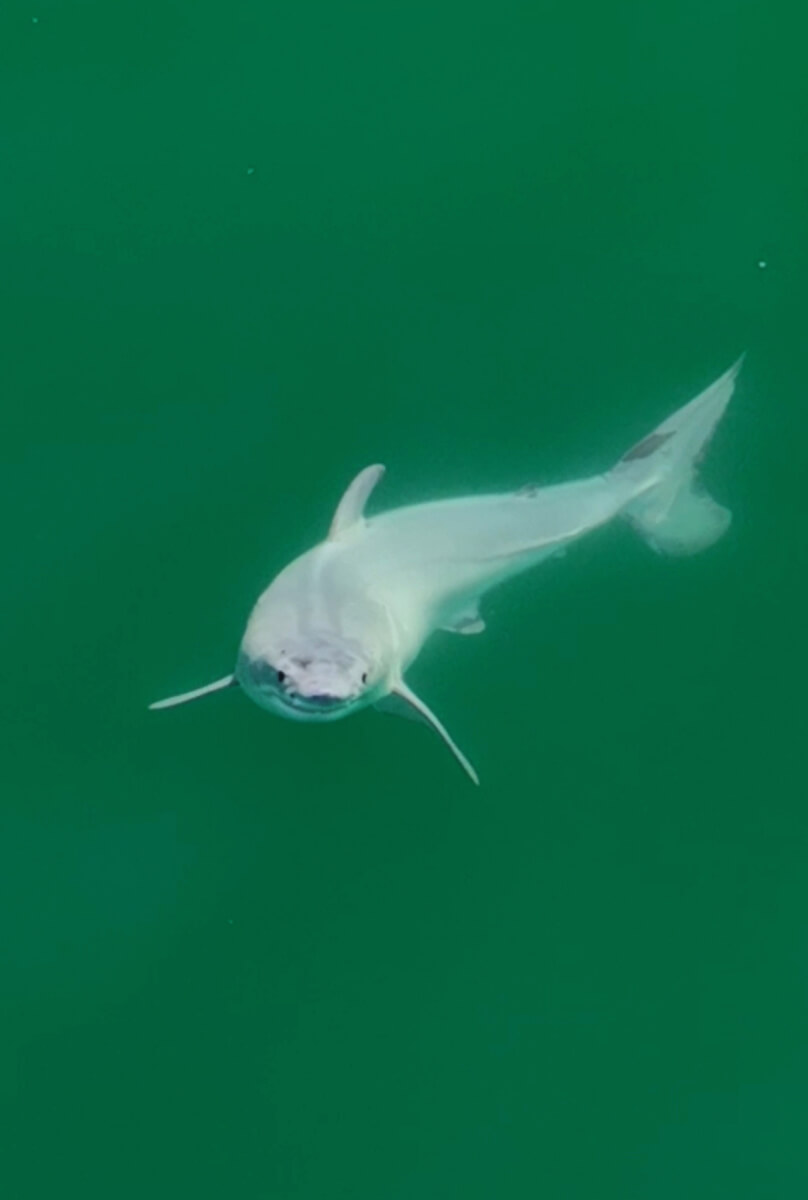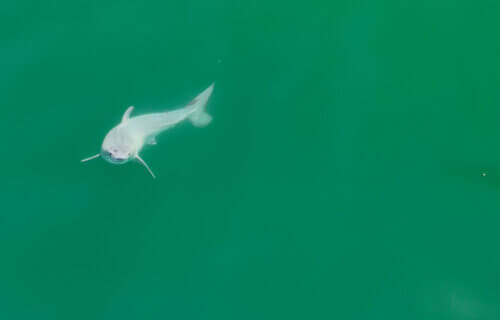RIVERSIDE, Calif. — For the first time ever, a live newborn great white shark was spotted in the wild. Wildlife filmmaker Carlos Gauna and University of California-Riverside biology doctoral student Phillip Sternes made the incredible discovery off the coast of Santa Barbara, California. On July 9, 2023, while scanning the Pacific Ocean waters, Gauna’s drone camera captured what appears to be a newborn great white shark, a species known for being the largest predatory shark with a formidable record of fatal attacks on humans.
The sighting of this roughly five-foot-long shark, which was pure white in color, is a significant event, as no one has ever observed a newborn great white in the wild before.
“We enlarged the images, put them in slow motion, and realized the white layer was being shed from the body as it was swimming,” says Sternes in a university release. “I believe it was a newborn white shark shedding its embryonic layer.”

This observation highlights the importance of having witnessed a live newborn white shark. Gauna, known online as The Malibu Artist, is an experienced shark filmmaker whose videos have garnered millions of views. His and Sternes’ discovery could be pivotal in solving the long-standing mystery of great white birthing habits.
“Where white sharks give birth is one of the holy grails of shark science. No one has ever been able to pinpoint where they are born, nor has anyone seen a newborn baby shark alive,” notes Gauna. “There have been dead white sharks found inside deceased pregnant mothers. But nothing like this.”
Great whites, typically grey on top and white on the bottom, are born live by their mothers. The embryonic sharks feed on unfertilized eggs for protein, and the mothers secrete “milk” in the uterus for additional nourishment.
“I believe what we saw was the baby shedding the intrauterine milk,” explains Sternes.
See the baby great white here:

The duo believes this sighting was indeed a newborn great white, not only due to its coloration but also because of other factors. First, Gauna observed large, likely pregnant great whites in this location in the days prior to the sighting.
“I filmed three very large sharks that appeared pregnant at this specific location in the days prior. On this day, one of them dove down, and not long afterwards, this fully white shark appears,” says Gauna. “It’s not a stretch to deduce where the baby came from.”
Additionally, the physical characteristics of the shark observed – thin, short, and rounded – suggest it was a newborn, possibly only hours or a day old. The central California coast, where the sighting occurred, has long been proposed as a birthing location for great whites. This sighting, close to shore, supports the theory that great whites are born in shallower waters than previously thought.
The discovery of this pup so near to the beach is significant, particularly considering that many scholars believe great whites are born farther out at sea. The duo’s finding could mean that these waters are a breeding ground for the species, which is listed as an international endangered species.
“Further research is needed to confirm these waters are indeed a great white breeding ground. But if it does, we would want lawmakers to step in and protect these waters to help white sharks keep thriving,” concludes Sternes.
The study is published in the journal Environmental Biology of Fishes.
You might also be interested in:

So, THAT”S where lawyers and politicians come from!